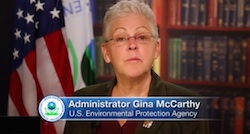When you visit the ZimmComm New Media websites dedicated to agriculture, you will see a new integrated AgWired brand  and new website names to better serve the animal agriculture segment of the industry.
and new website names to better serve the animal agriculture segment of the industry.
WorldDairyDiary.com will now be known as Animal.Agwired.com, which will offer news and information about all segments of livestock and poultry. “We regularly cover events such as the International Production and Processing Expo, World Pork Expo, and national beef cattle meetings, in addition to World Dairy Expo,” said ZimmComm president Chuck Zimmerman. “We wanted to consolidate all of our animal agriculture coverage into one site to make it easier for our readers to access.”
 PrecisionPays.com is now Precision.Agwired.com and will continue to include the latest news and information about precision agriculture, conservation, biotechnology and more. “Both websites (PrecisionPays and WorldDairyDiary) will remain accessible under the old URLs,” explained Zimmerman. “But they will now also be prominently featured on the AgWired.com home page.”
PrecisionPays.com is now Precision.Agwired.com and will continue to include the latest news and information about precision agriculture, conservation, biotechnology and more. “Both websites (PrecisionPays and WorldDairyDiary) will remain accessible under the old URLs,” explained Zimmerman. “But they will now also be prominently featured on the AgWired.com home page.”
In addition, the AgWired App for the iOS and Android store has also been innovated and users can now create the AgWired App on their mobile device themselves. To do this, just visit AgWired.com on your mobile device of choice and a popup will ask if you want to create a desktop icon. AgWired will then open with a click of the app in a very user-friendly format. Full instructions are included in an instructional video on YouTube.
 AgWired.com is ZimmComm’s flagship agribusiness news and information site, started in August of 2004. WorldDairyDiary began the following year and Precision Pays was started in February 2007. “The new design will provide consistency in the look of ZimmComm’s major agricultural websites,” Zimmerman added. energy.agwired.com, started in September 2005, will also sport a new look consistent with the other sites, but will remain under its current name. So keep an eye out for a DF Facelift as well.
AgWired.com is ZimmComm’s flagship agribusiness news and information site, started in August of 2004. WorldDairyDiary began the following year and Precision Pays was started in February 2007. “The new design will provide consistency in the look of ZimmComm’s major agricultural websites,” Zimmerman added. energy.agwired.com, started in September 2005, will also sport a new look consistent with the other sites, but will remain under its current name. So keep an eye out for a DF Facelift as well.
Other ZimmComm online services of interest include AgNewsWire.com dedicated to news release distribution and audio combined from all websites and available to all agricultural media.









